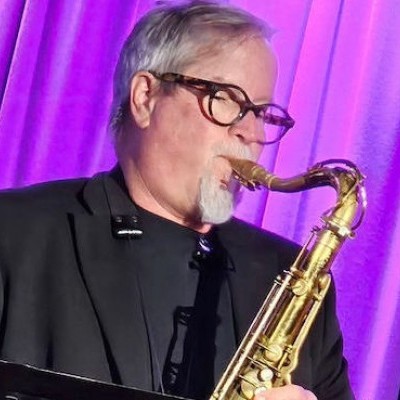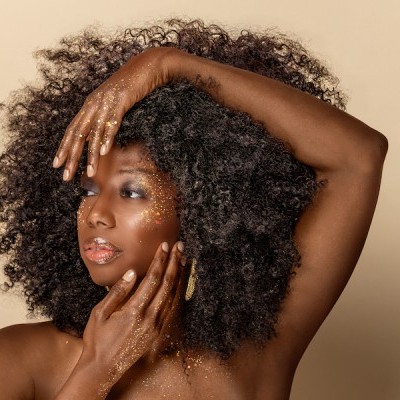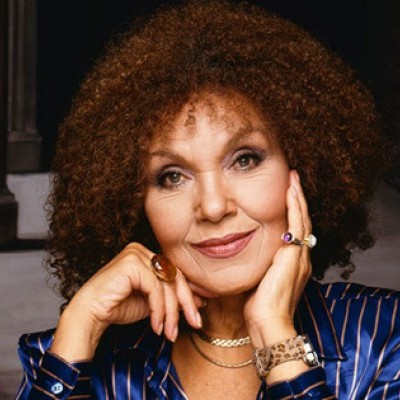Oct 28, 2025 10:47 AM
In Memoriam: Jack DeJohnette, 1942–2025
Jack DeJohnette, a bold and resourceful drummer and NEA Jazz Master who forged a unique vocabulary on the kit over his…

“It has a twang, but it’s not country,” Gardner says of the music from On The Trail With The Lonesome Pines. “And it’s not exactly jazz, but I think it works best when jazz musicians come at it.”
(Photo: Margherita Andreani)What Hilary Gardner wanted most growing up was to move to New York and sing jazz. But she lived in a small town in rural Alaska, and “the first music I ever got paid to sing was Patsy Cline covers at dive bars,” she revealed to the sold-out room at Manhattan’s Birdland Theater in March. With this admission, Gardner settled into the opening bars of “Cow Cow Boogie,” a shuffling ditty from On The Trail With The Lonesome Pines, her latest release for Anzic. The album’s curious theme? Cowboy songs from the 1930s and ’40s.
Gardner is, perhaps, best known for her work as a founding member of Duchess, the close-harmony vocal trio that has been charming international audiences since 2015. As with most touring groups, Duchess was grounded for many months during the pandemic: a hiatus that gave Gardner time to reflect. During the break, she discovered that she didn’t miss the standards that are Duchess’ métier as much as she might have. What she did miss, however, was the “freedom to roam” so glorified by the country-western tunes that had filled her youth.
She began to seek out this mostly forgotten material wherever she could find it. “A picture started to emerge,” she said. “There’s a body of work that’s been gathering dust for decades, and it’s not neatly categorized.”
Even as she absorbed this hard-to-define, country-western music “in the ethers” of her Alaskan hometown, Gardner was devouring her parents’ collection of jazz recordings, learning to swing by listening to Ella Fitzgerald, Joe Pass and Carmen McRae. At the same time, she was immersed in classical musical programs.
The solid musicianship that Gardner gained in her formative years left her uniquely suited to tackle both the restorative and performative aspects of the Lonesome Pines project. Even so, the first tricky step was deciding just how to present this unusual material. “The repertoire of the album falls in a really interesting gray area,” she said of the 12 tracks. “It has a twang, but it’s not country. And it’s not exactly jazz, but I think it works best when jazz musicians come at it.”
That jazz musicians take naturally to this repertoire only makes sense, Gardner explained — so many of the “singing cowboy” tunes were written by songbook composers from the first part of the 20th century. At the time, these songwriters often worked in Hollywood, lured by the demand for soundtracks to the recently introduced “talking films” — a huge number of which were westerns rhapsodizing the early frontier experience.
Of this material, Gardner was first drawn to “Twilight On The Trail,” a halcyon ballad recorded by Bing Crosby in 1936. From this version, Gardner, a diehard Crosby fan, borrows only the introspective mood. Beyond this, she uses gentle groove, well-calibrated vibrato and smooth slides to animate the tune’s cinematic lyrics.
“The images are very literal — nights falling on the prairie, silver stars and purple hills,” she said. “But then [the song goes], ‘When it’s twilight on the trail/and my voice is still/please plant this heart of mine/underneath the lonesome pine on the hill.’ That person is singing about death. The song isn’t morbid, though. It’s saying that this is what actually matters.”
Gardner parsed the songs’ structures, taken with their understated sophistication. For instance, on “Silver On The Sage,” another Crosby title, “the ‘A’ sections are a simple lullaby-type melody,” she observed. “But then a surprising, jazzy bridge comes out of nowhere.” In this way the tune reflects “Easy Living” and “Thanks For The Memories,” two other songs by composers Leo Robin and Ralph Rainger.
To finesse such subtleties in the music, Gardner needed an unusually versatile creative team behind her. She knew that The Lonesome Pines — her backing band — would constellate around guitar, an instrument that is inherently “simpatico with the human voice, regardless of key or timbre,” she said.
So decided, she found a particularly gifted interpreter of American roots music in guitarist/vocalist Justin Poindexter, who, with bassist Noah Garabedian and drummer Aaron Thurston, form the band’s rhythm section. Gardner drew as well on the skills of her husband, Eli Wolf, who’d produced such genre-bending jazz acts as Norah Jones, The Hot Sardines and Robert Glasper.
Personnel in place, Gardner proceeded to recontextualize the tunes, fusing jazz with elements of roots music — or vice versa. She opens “The Call Of The Canyon,” for example, with a simple bass-voice verse that portends a medium-tempo jazz feel, until Poindexter adds rhythmic mandolin and countrified guitar. Conversely, on the tongue-in-cheek “Jingle Jangle Jingle (I Got Spurs),” the duo vocals ride on the polka-derived pulse of Thurston’s drumming until the solo breaks, when the band diverges into blues licks and straightahead swing.
This said, some of the tunes favor a decidedly retro sound — like “Under Fiesta Stars,” a crooning air made all the more romantic by the delicious Tejano strains of guest instrumentalist Sasha Papernik’s accordion, or “Cowboy Serenade (While I’m Smoking My Last Cigarette),” with its mournful ode to the setting sun. By the first “yippee-ki-yay” you realize that Gardner has left jazz far behind.
“This project has shown me that you can move outside of the boundaries that you’ve set for yourself. You can explore, go out beyond what you thought your territory was,” Gardner said. “It’s been a surprise to me, in hindsight, that this project was about an inner cartography that I wasn’t even aware of.” DB

Jack DeJohnette boasted a musical resume that was as long as it was fearsome.
Oct 28, 2025 10:47 AM
Jack DeJohnette, a bold and resourceful drummer and NEA Jazz Master who forged a unique vocabulary on the kit over his…

“I’ve told students, ‘I don’t mind if you use AI for this or that project,’” says MIT’s Pascal Le Boeuf. “‘But you need to tell me.’”
Sep 18, 2025 11:14 AM
A standard joke when it comes to discussing artificial intelligence, or AI, is that it’s developing so rapidly that…

Chuck Manning Works for NASA … and plays jazz.
Sep 18, 2025 11:23 AM
Congratulations! After years of study, you’ve earned your degree in jazz performance. But let’s face it: Making a…

Gadabout Season developed over many months of recording sessions in Brandee Younger’s East Harlem living room.
Sep 16, 2025 11:52 AM
When she’s on the road, Brandee Younger enters a hybrid state of action and contemplation. Free of daily distractions…

Cleo Laine, 1927–2025
Sep 16, 2025 10:03 AM
The music world mourns the loss of three important artists from the realms of jazz, blues and beyond with the recent…